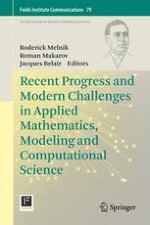This volume is an excellent resource for professionals in various areas of applications of mathematics, modeling, and computational science. It focuses on recent progress and modern challenges in these areas. The volume provides a balance between fundamental theoretical and applied developments, emphasizing the interdisciplinary nature of modern trends and detailing state-of-the-art achievements in Applied Mathematics, Modeling, and Computational Science.
The chapters have been authored by international experts in their respective fields, making this book ideal for researchers in academia, practitioners, and graduate students. It can also serve as a reference in the diverse selected areas of applied mathematics, modelling, and computational sciences, and is ideal for interdisciplinary collaborations.
